Churches and established religion are an integral part of history. Throughout the South, churches served as gathering places for worship, schools, political clubs, meetings, weddings, revivals, and social occasions. Many of these churches were built in the 1800’s and feature impressive architecture and grandeur. Experience an important piece of Troup County history with a visit to a historic church!
Many of the churches in Troup County were established in the late 1820’s and 1830’s. The number of churches in the area grew significantly following the Civil War, when African American parishioners began forming their own ministries. A third boost in church numbers came with the establishment of textile mills in areas like Hillside.
Churches have always been an integral part of Georgia’s history and culture. The beautiful houses of worship in Troup County are no different, and provide wonderful spaces for reflection, meditation and prayer.
Warren Temple Methodist
Warren Temple Methodist Episcopal Church is a cornerstone of LaGrange’s history, particularly for African Americans. The story of Warren Temple begins in the mid-1800s when LaGrange’s main churches allowed both free and enslaved people of color to worship, although they were segregated from white congregants. After the Civil War, black congregants yearned for a space of their own. With the help of Rev. John H. Caldwell, they built a church on Hill Street in 1865. The church’s first minister, Rev. Peter Abram Heard, was a white plantation owner, but the church’s spiritual leadership soon began transitioning to black ministers.
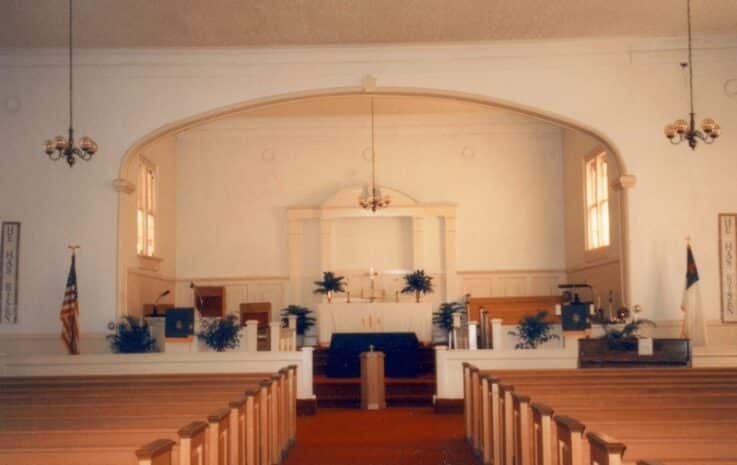
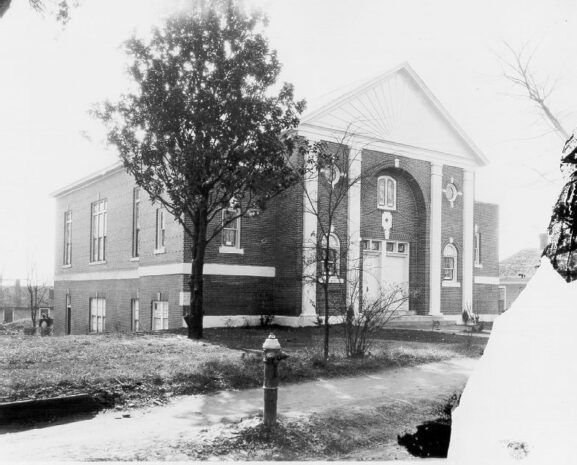
By 1870, Warren Temple had established itself as a conservative spiritual home for black worshippers, distinguishing itself from more radical AME churches in the area. In 1873, John T. King, the son of former slave and esteemed architect Horace King, joined the church and quickly became a leader, taking on responsibilities second only to the minister. In 1882, the church was renamed Warren Temple Methodist Episcopal Church in honor of Bishop Henry White Warren. That same year, Rev. S. C. Upshaw became the church’s first appointed black minister.
Warren Temple didn’t just nurture spiritual growth; it also became a beacon for black education. The church was the first in the community to offer spelling classes for people of color. In 1875, with support from John King and other black businessmen, the church convinced the city to fund a school for black students. This school operated within the church until its own building was completed in 1877, eventually evolving into Hill Street School, with King serving as its longtime superintendent.
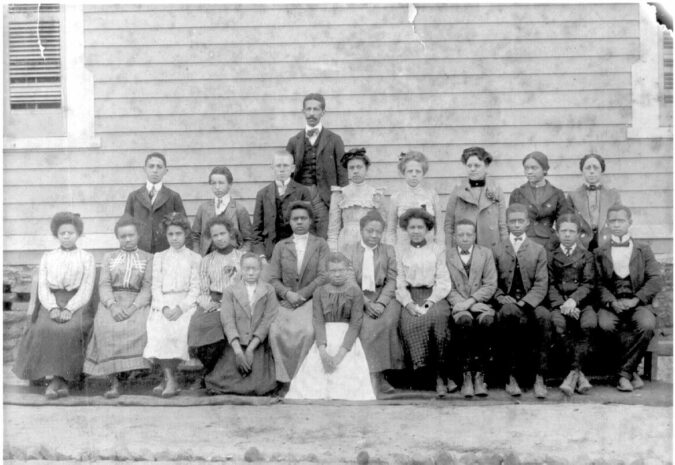
As the church grew, so did its influence. In 1940, Warren Temple hosted the meeting where LaGrange’s first NAACP chapter was formed in response to the lynching of Austin Callaway. This chapter remains active to this day.
Through the years, Warren Temple has undergone numerous changes, including a significant renovation in 2003 that restored the sanctuary to its original grandeur. It continues to stand as a symbol of faith, education, and social justice, deeply rooted in the history and heart of LaGrange. The church remains an active part of our community, and is located at 416 E Depot Street.
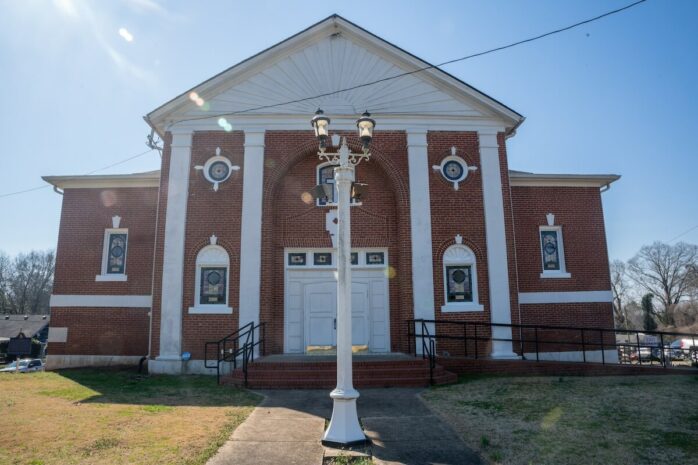
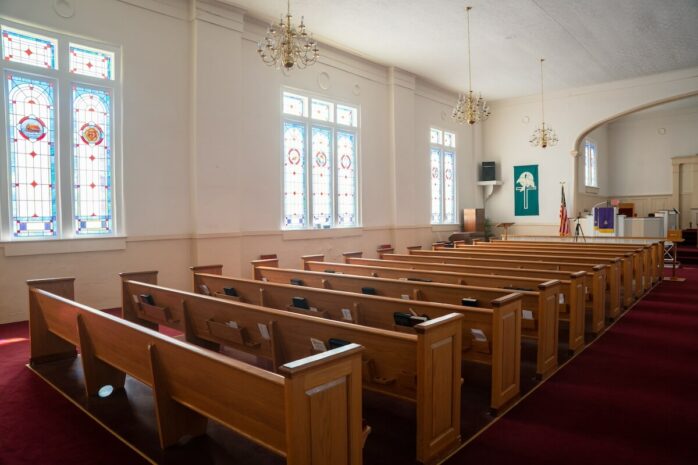
St. Peter’s Catholic Church
The land where St. Peter’s is located was once owned by Godfred Kener, a Prussian immigrant who established a sawmill and furniture factory on the site in the 1840s. It was one of the only industrial buildings that was not burned during the Civil War because it was producing coffins.
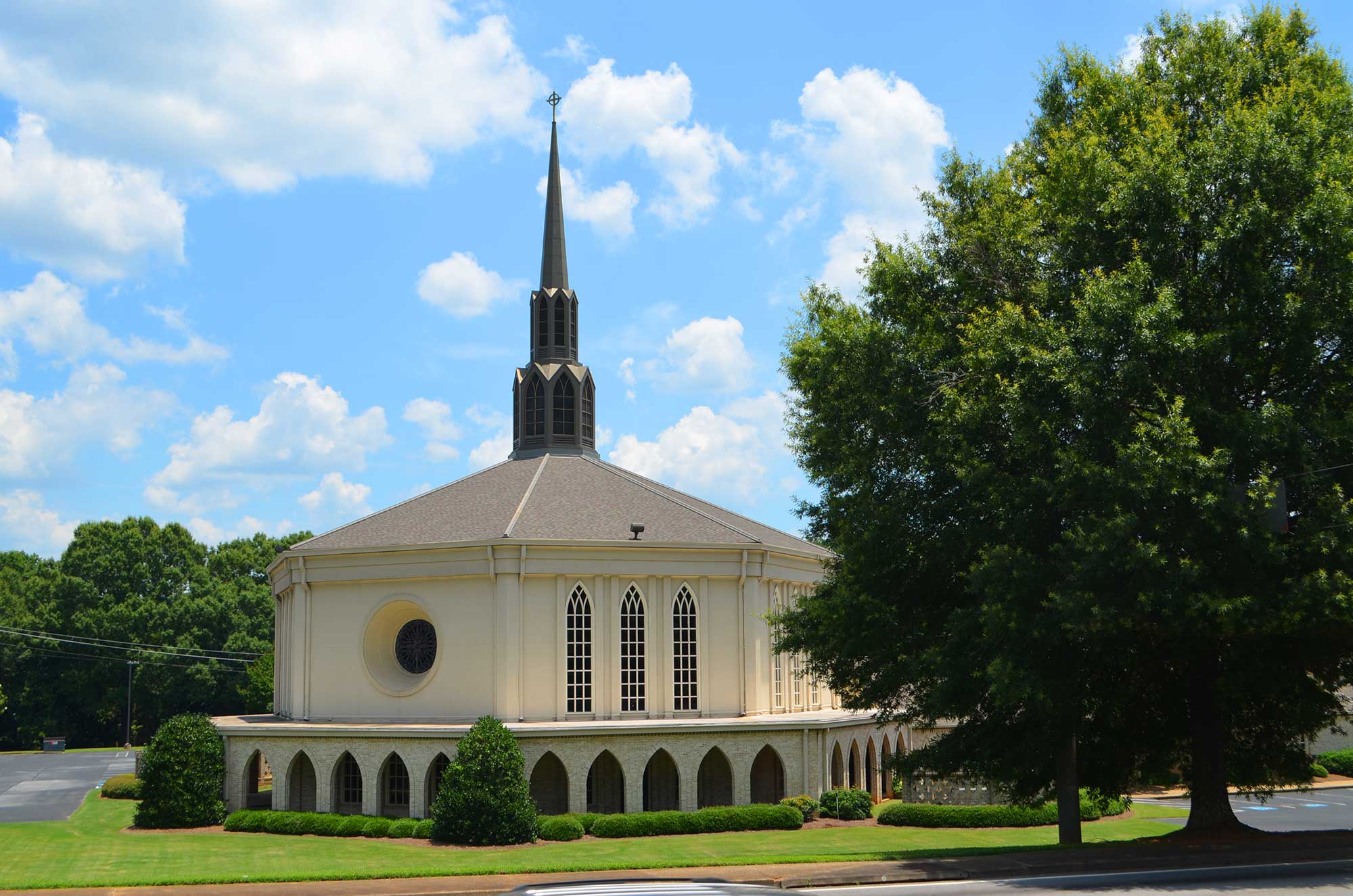
In 1888, it became the city’s first textile mill. The mill and the furniture store were torn down in 1986 and St. Peter’s Catholic Church was built on the lot.
Visit St. Peter’s and the former site of LaGrange Mills at the southeast corner of Morgan Street and Lafayette Parkway.
Long Cane Baptist Church
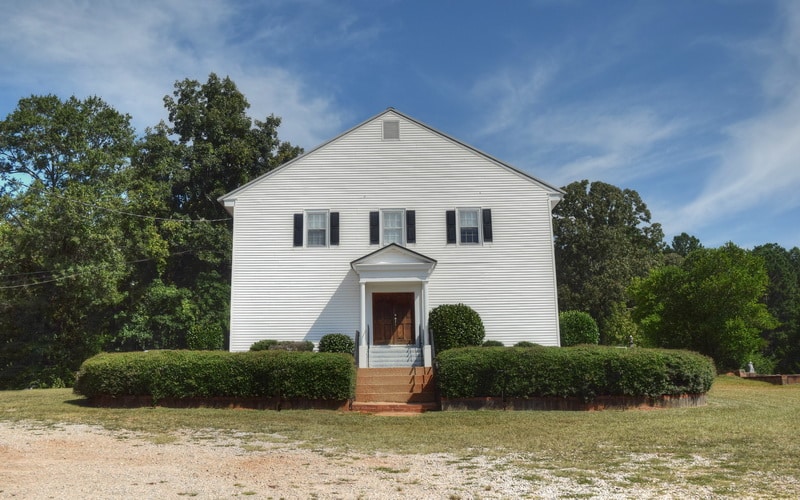
Long Cane Baptist Church, the oldest church building in Troup County was hand-crafted under the leadership of Reverend James Reeves . The building was constructed adjacent to meeting grounds owned by the Baptist and Presbyterian Churches of Long Cane, who worshipped together. Long Cane Baptist has pews and floorboards touched by over 150 years of history!
Visit Long Cane Baptist at 5458 W Point Road in LaGrange.
Flat Shoals Baptist
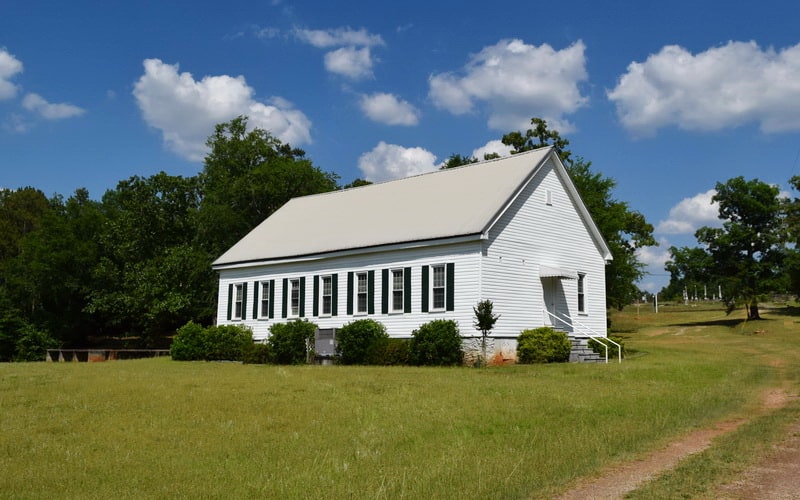
Flat Shoals Church was organized in 1829 under the name Smith’s Meeting House. The name was changed to Flat Shoals Church the following year and the original structure was completed between 1832 and 1836. Many Troup County pioneers are interred in the cemetery.
Flat Shoals Church can be found at 2458 Salem Road in neighboring Pine Mountain.